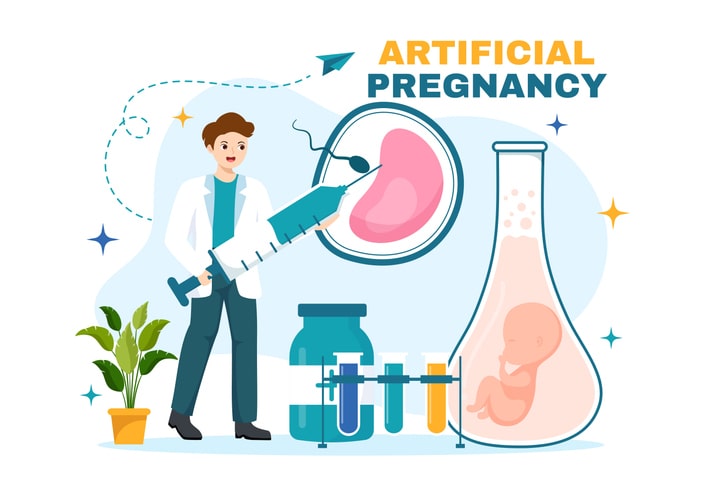The medical world has witnessed several ground-breaking innovations over the decades, but few compare to the invention of In Vitro Fertilization (IVF). This revolutionary procedure has given hope to countless couples struggling with infertility, enabling them to conceive and bear children. This article delves into the journey of how in vitro fertilization was invented, tracing its developments, milestones, and the key figures behind its success.
The Early Experiments
The concept of IVF can be traced back to the 1890s when Walter Heape, a professor at the University of Cambridge, England, achieved the first known case of embryo transplantation in rabbits. This accomplishment set the stage for the application of this concept to human fertility (Edwards & Steptoe, 1980). The early 20th century saw numerous innovations and discoveries which laid the foundation for IVF. Medical researchers identified the female fertility hormone estrogen in 1923, followed by progesterone in 1929 (Jones, 2005). The development of hormone supplements for fertility in 1943 further boosted the chances of pregnancy in patients (Johnson et al., 2010).
The Pioneering Research in the Mid-20th Century
The first significant stride towards IVF in humans came in the mid-20th century. In the 1950s, Dr. Min Chueh Chang successfully delivered baby rabbits using the IVF process, proving that an embryo fertilized in a lab could be transferred successfully to the womb and carried to term (Chang, 1959). However, the journey to making IVF viable for humans was fraught with challenges. Despite several attempts in the early 1970s, it wasn’t until 1978 that the first successful IVF pregnancy and live birth occurred (Steptoe & Edwards, 1978).
The Birth of the First “Test Tube Baby”
The world’s first baby conceived via IVF, Louise Brown, was born on July 25, 1978. This groundbreaking event was the result of the collaborative effort of Dr. Patrick Steptoe and Dr. Robert Edwards in England. This achievement not only proved that IVF could be done safely and successfully but also opened the doors to building families for countless couples worldwide who were unable to conceive naturally (Steptoe & Edwards, 1978).
Technological Advancements and the Rise of IVF
Since the birth of Louise Brown, the process of IVF has evolved dramatically with continuous improvements in medical equipment and refinements in IVF techniques. By 1986, over 1,000 children were born via IVF, marking a significant milestone in the field of assisted reproduction (Trounson, 1986). Advancements in laboratory techniques, such as the development of effective culture media for embryo growth and the ability to manipulate reproductive physiology, have significantly improved IVF success rates over the years. Today, IVF yields a success rate of nearly 50% in cases where the woman is younger than 35 years (CDC, 2021).
Controlled Ovarian Stimulation and Ovarian Hyperstimulation Syndrome
The introduction of controlled ovarian stimulation (COS) proved to be a game-changer in the field of IVF. This process involved injecting women with gonadotropins to stimulate multiple ovarian follicles to produce oocytes. This led to an increase in average oocyte yields and pregnancy rates, boosting the effectiveness of IVF (ASRM, 2023). However, the use of supraphysiologic doses of gonadotropins also brought a significant risk – ovarian hyperstimulation syndrome (OHSS). Characterized by hemoconcentration and third spacing of fluid leading to ascites and electrolyte abnormalities, OHSS became a common complication of ovarian stimulation (Hastings Center Report, 2023).
The Role of Ultrasound in IVF
The use of ultrasound in IVF has contributed significantly to the success of the procedure. Ultrasound allows for the visual tracking of follicular growth and the precise timing of egg retrieval. It has also facilitated the development of techniques such as transvaginal oocyte retrieval, making the process less invasive and more efficient (Journal of Medical Ethics, 2023).
Preimplantation Genetic Testing
One of the significant advancements in IVF is preimplantation genetic testing. This process involves screening embryos for chromosomal abnormalities or specific gene disorders before transfer to the uterus. This helps ensure the transfer of healthy embryos, thereby increasing the chances of a successful pregnancy and reducing the risk of genetic disorders (ASRM, 2023).
The Evolution of Embryo Culture
The evolution of embryo culture techniques has played a pivotal role in the success of IVF. Scientists have continuously refined culture media to optimize embryo development and clinical outcomes. Furthermore, improvements in embryo culture have allowed for the extension of in vitro culture of embryos to the blastocyst stage, permitting more detailed morphological assessment of embryos and better selection for transfer (Hastings Center Report, 2023).
The Future of IVF
The journey of IVF from its conception to its current state of sophistication has been a long and eventful one. As medical professionals continue to refine these techniques, the history of IVF continues to unfold. In the future, we can expect further advancements in preimplantation genetic testing, improvements in embryo culture techniques, and efforts to ensure safety standards in this competitive field (Journal of Medical Ethics, 2023).
For more detailed information on specific aspects of IVF, you can read more about ovulation and ivf pain and a comprehensive guide to the step-by-step IVF process.
Conclusion
In conclusion, the invention of in vitro fertilization has revolutionized the field of reproductive medicine, offering hope to countless couples worldwide. From its humble beginnings to the advanced procedures of today, the journey of IVF reflects the relentless pursuit of scientific advancement in the service of humanity.
References
- American Society for Reproductive Medicine (ASRM). (2023). Ethics Committee Report: Ethical Considerations of Assisted Reproductive Technologies. Retrieved from ASRM Ethics Committee Report
- Chang, M. C. (1959). Development of Fertilized Rabbit Ova. Nature, 184, 466-467.
- Centers for Disease Control and Prevention (CDC). (2021). Assisted Reproductive Technology (ART) Data. Retrieved from CDC ART Data
- Edwards, R. G., & Steptoe, P. C. (1980). A Matter of Life: The Story of a Medical Breakthrough. Hutchinson.
- Hastings Center Report. (2023). Special Issue: Bioethics and Reproductive Technologies. Retrieved from Hastings Center Report
- Journal of Medical Ethics. (2023). Special Issue: Ethical Issues in Assisted Reproduction. Retrieved from Journal of Medical Ethics
- Johnson, M. H., Jones, H. W., & Trounson, A. O. (2010). Handbook of In Vitro Fertilization. CRC Press.
- Steptoe, P. C., & Edwards, R. G. (1978). Birth After the Reimplantation of a Human Embryo. Lancet, 2(8085), 366.
- Trounson, A. O. (1986). The Contribution of Embryo Culture Systems to the Success of Human In Vitro Fertilization. Human Reproduction, 1(4), 369-375.




